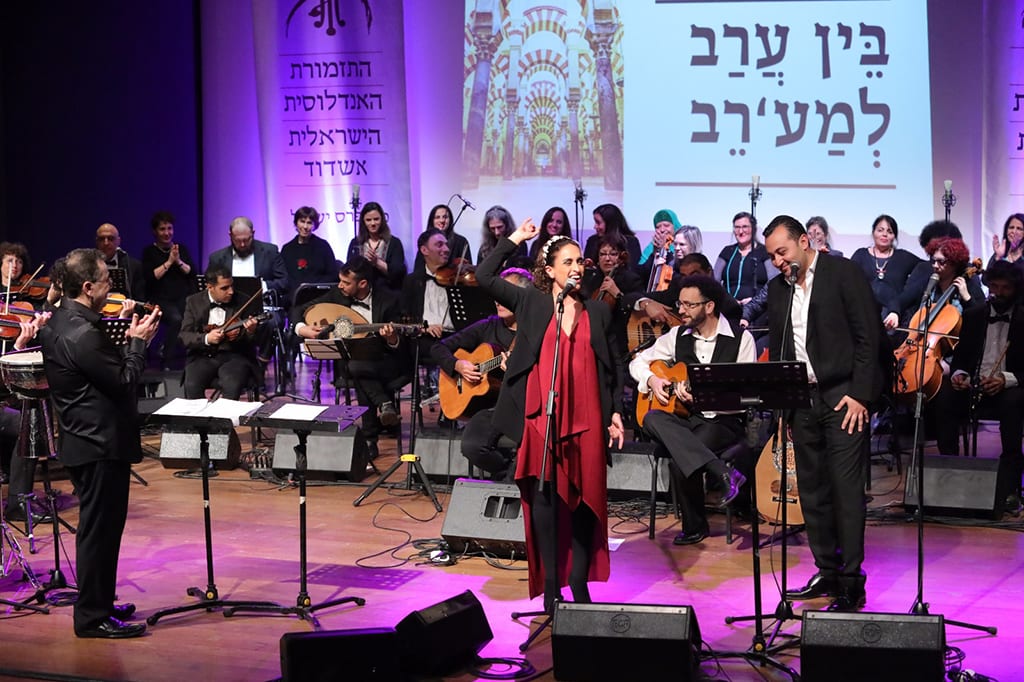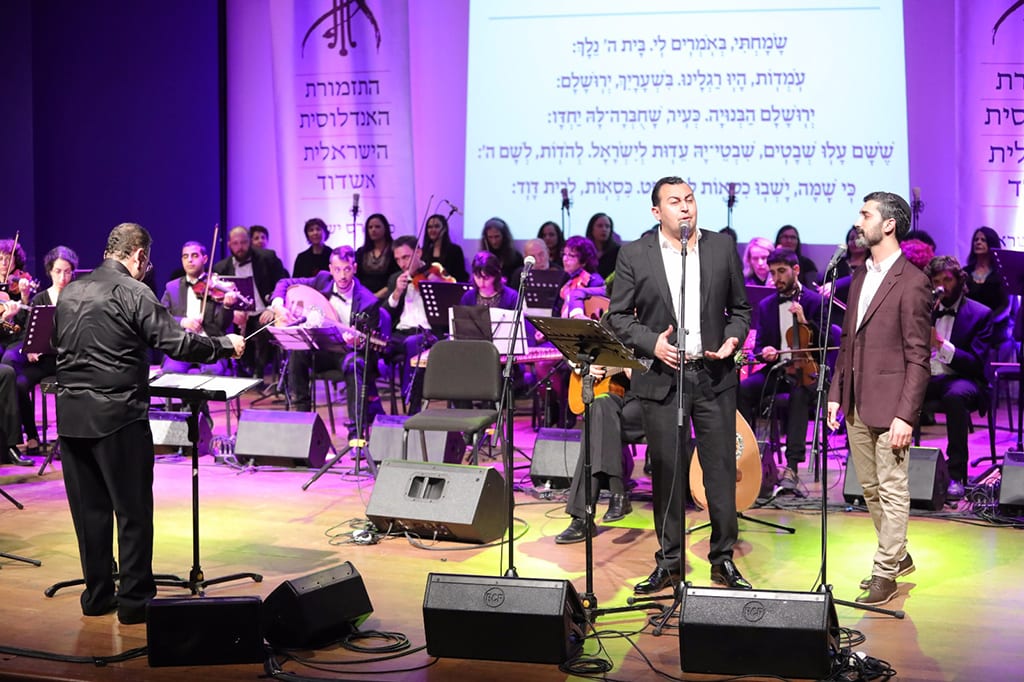It was a most unusual musical event, one that can probably happen only in Israel: a summit meeting of Andalusian music of the Maghreb, the region of North Africa west of Egypt, imported from Andalusia in the 15th century, and Arabic music of Egypt, Syria and Jordan, all performed by Jewish, Moslem and Christian artists on one stage in Tel Aviv. For many Israelis, whose family roots are in those regions, such musical styles bring back memories of home. Yet you would not be able to listen to any of it in our regular concerts halls or main stream Israeli orchestras.
Over 20 years ago The Israeli Andalusian Orchestra Ashdod was founded with exactly the objective of preserving the tradition and spreading out the message to wider audiences. The 40-strong orchestra includes musicians who play western instruments with music sheets in front of them, side-by-side players of either similar instruments or traditional ones who have never learned how to read music notes: they practice and play out of memory only. Two of the most brilliant violists hold their instruments on their lap vertically, as if they were miniature cellos… A large number of string players in all Israeli orchestras are immigrants from the Former Soviet Union. The Andalusian Orchestra is no exception – they make about half of its members, and seem to enjoy so much music styles that they have never heard of, let alone listened to, before they moved to Israel. Truly the most cross-cultural event one can imagine.
In western civilizations many Jewish traditional cantors have become well known opera stars, thanks to their exceptional voices. Names like Richard Tucker, Ian Pears or Joseph Schmidt are notable examples. In the Jewish Oriental tradition a cantor is known as a Paitan. Both Buzaglo and Yechezkel are first class Paitans. Their singing is clever, virtuosic and engaging. Songs that were made famous by legendary Arab singers like the Lebanese Fayruz or the Egyptian Mohammed Abdel Wahab have received new lives in their performances. The conductor Teisir Elias is a well known musical authority in Israel. He was born in the Arab town of Shefaram in Northern Israel and heads the music department of the Haifa University. He deserves the full credit for bringing all those worlds together.
An important ingredient in the musical cocktail was the Rana Choir, in which Arab-Moslem, Arab-Christian and Jewish women sing together. It is skilfully led by conductor Mika Danny.
The cherry on top of the pie was a guest performance by Noa and her regular accompanying partner Gil Dor. Noa herself comes from a Yemenite family and shared some of her childhood traditions with the audience. Then she collaborated with the other artists on stage in special versions of her well known hits and demonstrated once more her phenomenal skills in commanding a stage. The full auditorium was up on its feet for a long standing ovation.
One last note about audiences: two days earlier I was at the premier of Lucia Di Lammermoor at the Israeli Opera House, next door. I could not recognize a single face that I have met in both events. However, the great majority of people attending both concerts were adults in their better years. Both musical worlds fail to attract younger generations, and this leaves lots of room for thought and action.
The Israeli Andalusian Orchestra has a variety of programms during the rest of this season, up to the end of June 2017.



